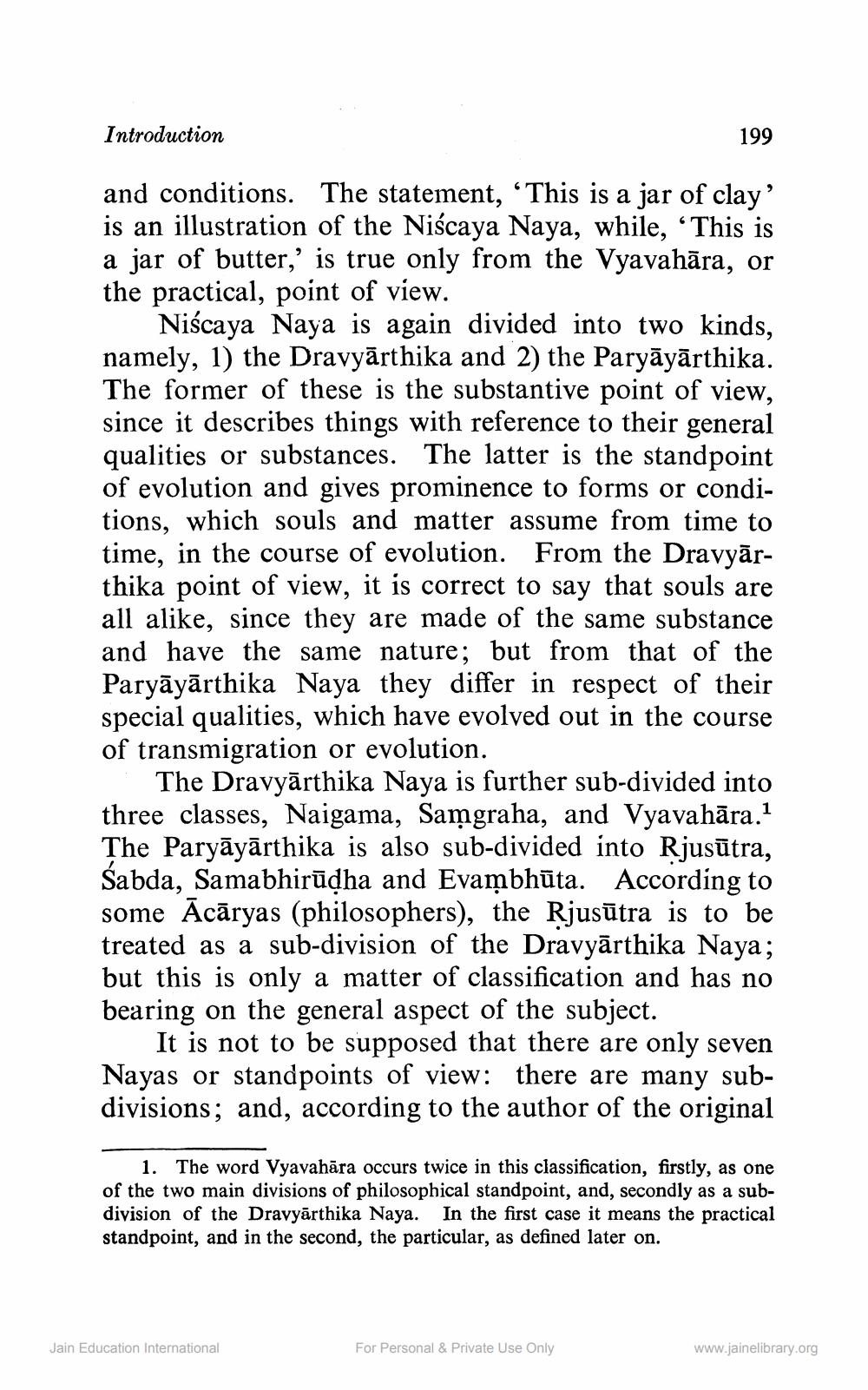________________
Introduction
199
and conditions. The statement, “This is a jar of clay' is an illustration of the Niscaya Naya, while, “This is a jar of butter,' is true only from the Vyavahāra, or the practical, point of view.
Niscaya Naya is again divided into two kinds, namely, 1) the Dravyārthika and 2) the Paryāyārthika. The former of these is the substantive point of view, since it describes things with reference to their general qualities or substances. The latter is the standpoint of evolution and gives prominence to forms or conditions, which souls and matter assume from time to time, in the course of evolution. From the Dravyārthika point of view, it is correct to say that souls are all alike, since they are made of the same substance and have the same nature; but from that of the Paryāyārthika Naya they differ in respect of their special qualities, which have evolved out in the course of transmigration or evolution.
The Dravyārthika Naya is further sub-divided into three classes, Naigama, Samgraha, and Vyavahāra.1 The Paryāyārthika is also sub-divided into Rjusūtra, Sabda, Samabhirūdha and Evambhūta. According to some Ācāryas (philosophers), the Rjusūtra is to be treated as a sub-division of the Dravyārthika Naya; but this is only a matter of classification and has no bearing on the general aspect of the subject.
It is not to be supposed that there are only seven Nayas or standpoints of view: there are many subdivisions; and, according to the author of the original
1. The word Vyavahāra occurs twice in this classification, firstly, as one of the two main divisions of philosophical standpoint, and, secondly as a subdivision of the Dravyārthika Naya. In the first case it means the practical standpoint, and in the second, the particular, as defined later on.
Jain Education International
For Personal & Private Use Only
www.jainelibrary.org




